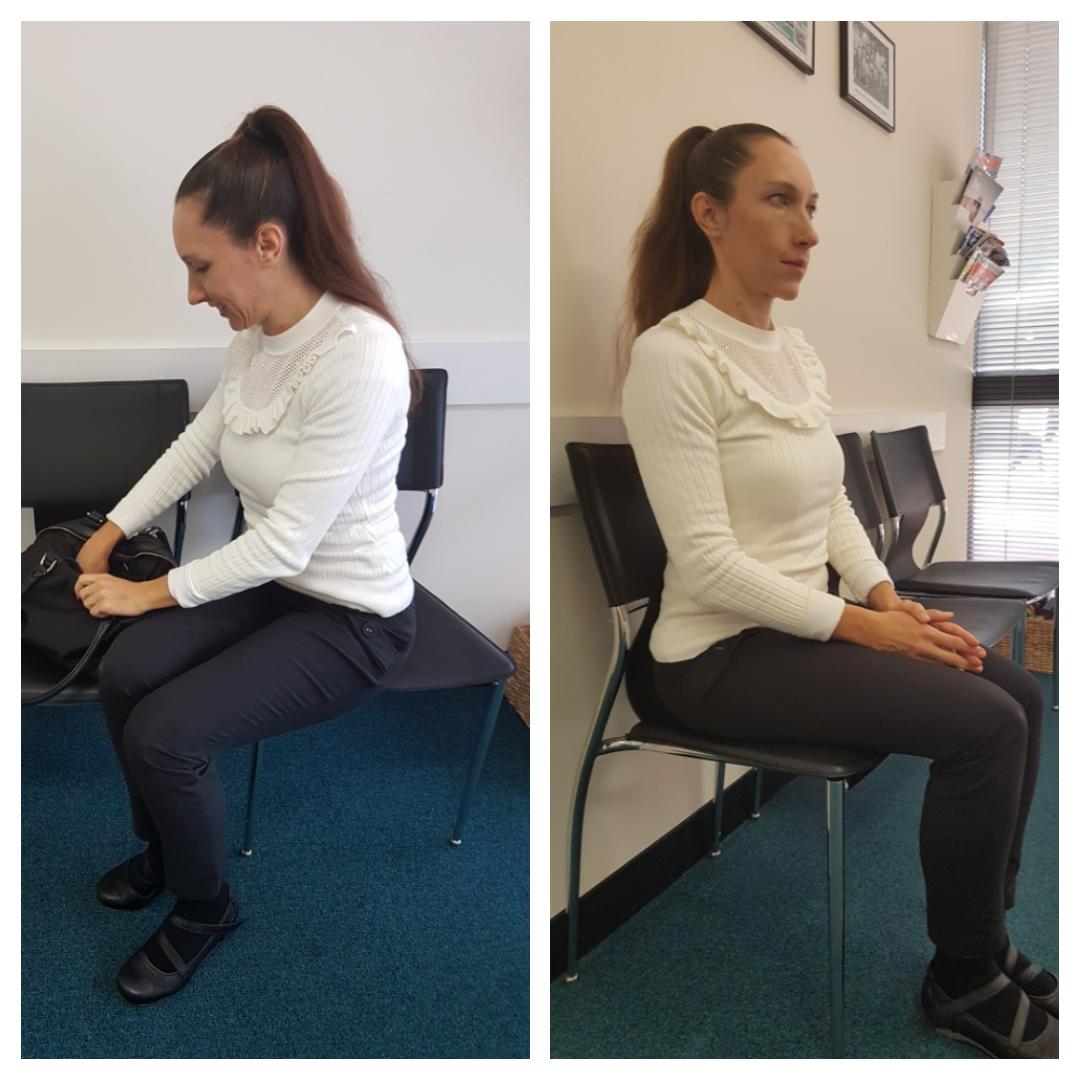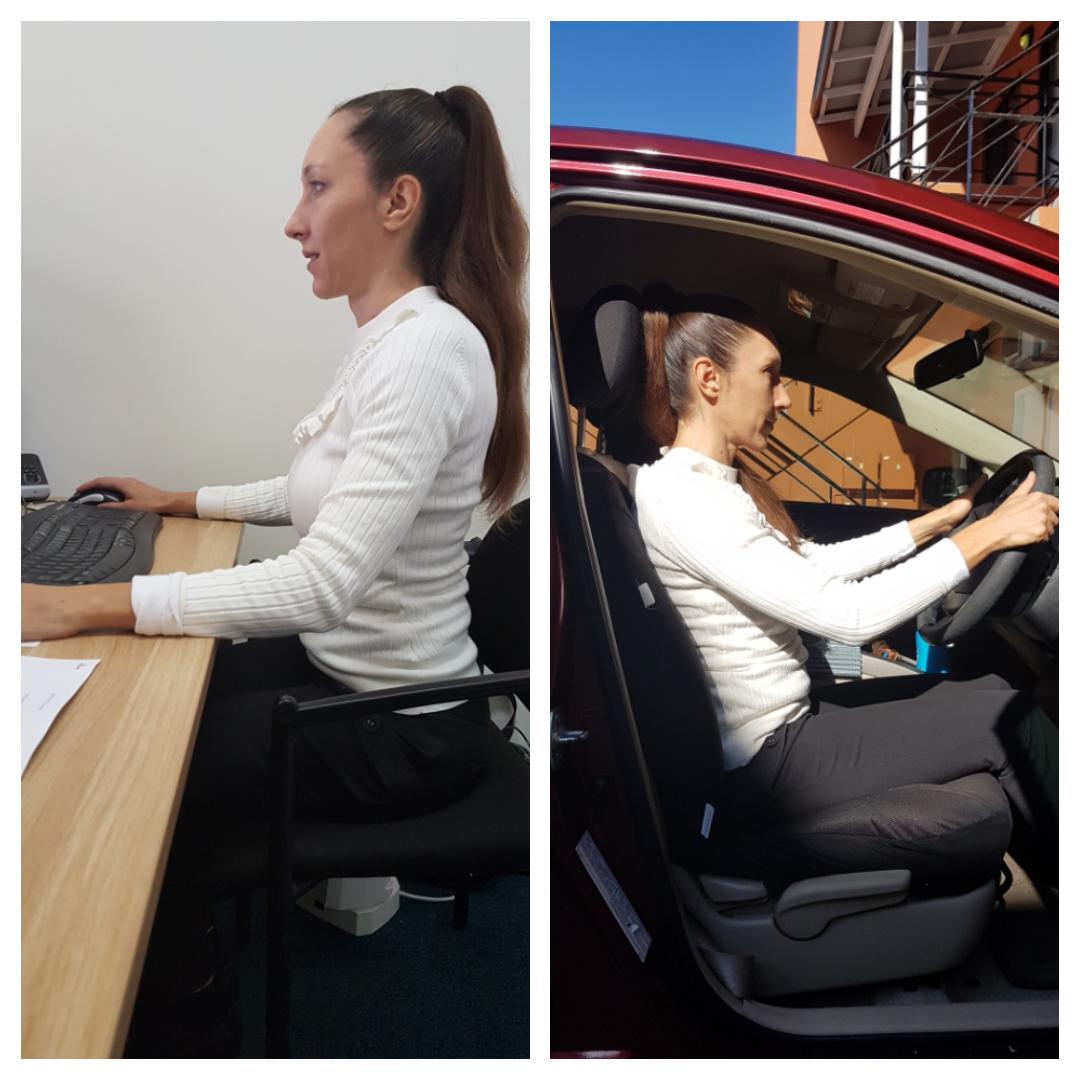 Maintaining a good posture is key for avoiding back pain or other musculoskeletal aches and pains. Life can get the best of us, and we won’t be consciously aware of how our everyday postural habits will cause chronic pain in the future. Most of the time, it is only recognised when pain or physical symptoms present. It is important we are all educated about correct posture to prevent debilitating pain, which may also be very costly to correct.
Maintaining a good posture is key for avoiding back pain or other musculoskeletal aches and pains. Life can get the best of us, and we won’t be consciously aware of how our everyday postural habits will cause chronic pain in the future. Most of the time, it is only recognised when pain or physical symptoms present. It is important we are all educated about correct posture to prevent debilitating pain, which may also be very costly to correct.
So what is posture? Your posture is the position your body holds when standing, sitting or lying down. A good posture is when muscle tension is working equally and holding the body in its appropriate position. The main postural muscles for the upper body include: deep neck flexors, upper trapezius, levator scapulae, sternocleidomastoid, pectoralis, lower trapezius, and serratus anterior. The main postural muscles for the lower body include: abdominals, thoracolumbar extensors, rectus femoris, iliopsoas and gluteal muscles. Poor posture will in turn lead to imbalances within these muscles, causing pain and other complications later down the track.
Why is good posture important?
- Keeps bones, joints in their appropriate positions and decrease the degeneration at the joints.
- Increases the efficiency of muscles.
- Assists in the prevention of muscular strain, overuse damage.
- Decreases the stress placed on ligaments, in turn reducing the risk of injury.
 Some common risk factors associated with poor posture include stress, obesity, pregnancy, weak postural muscles, abnormally tight muscles, decreased flexibility, poor work environment, incorrect working posture, and improper sitting posture.
Some common risk factors associated with poor posture include stress, obesity, pregnancy, weak postural muscles, abnormally tight muscles, decreased flexibility, poor work environment, incorrect working posture, and improper sitting posture.
Lifting and carrying:
When lifting or carrying a weight, make sure that your feet are at least hip width apart and your knees are bent, this ensures that you have a “broad base” making you more stable. Always ensure that you have a relaxed, straight back when lifting and avoid twisting the torso. Keep your head and shoulders directly above your waist and your elbows bent and to your side whilst keeping the weight as close to your body as possible, to minimise the stress on your back. Also try and keep the abdominal muscles / core muscles engaged.
Computer posture:
When sitting down and concentrating on a computer screen for so long, we may not realize that our posture and the position we are in may be harmful to our spine. Therefore, it is highly beneficial to take the time to adjust your chair. Start by adjusting the height of the chair so that your eyes are level with the top of the computer screen, your feet should be flat on the floor but with a slope from your hips to your knees, so your hips sit slighter higher than your knees. Ensure your bottom is against the seat back and your shoulder blades are touching the rest of the chair. Make sure to stand up and have regular stretches, never sit at the computer for longer than 40 minutes, less if possible.
Buying a bed/sleeping:
When selecting a bed, there is no one solution that suits all. However, selecting the right bed for you has the potential to minimise those factors that may lead to back pain. Some good questions to consider when trying to decide if you may need a new bed/mattress are: are you getting a comfortable night’s sleep? If the answer is no, then consider the bed as the problem. Do you feel the springs through the mattress? And is the mattress more than 10 years old? If they’re both a yes, then consider purchasing a new one.
Driving:
Just like computer posture, driving posture needs to be adjusted each time to ensure that it suits you, especially if you share the car with other people. Ensure a relaxed driving position to minimise stress on the spine. The seat should be slightly backwards so that it feels natural and your feet should be at a length that you mainly need to use your ankles and not your leg to press the pedal. Your hands should sit on the steering wheel with a slight bend at the elbows.
Gardening:
Gardening is just like any exercise, you need to make sure to warm up first before going straight into heavy work. Start off with light jobs to decrease the chance of muscle strain and take regular breaks after every 20-30minutes.
Bags:
If you have to carry a bag throughout the day it is best to keep it light, an easy tip to ensure this is to check the contents of your bag each day to make sure you aren’t carrying unnecessary items.
Buying a bra:
The most important thing to consider when buying a bra is to ensure that it gives you as much support as possible. Bras that do not fit properly may have a negative effect on the shoulders and chest and can cause back pain. There are a few things to consider when buying a bra, make sure that the under band fits firmly against the body and does not move up or down. If the shoulder straps are digging in, then consider changing the bra size or loosening the straps. Additionally, if the centrefold of the bra is lifting away from the body this is a sign that the cup size is too small. Furthermore, check if the back band is overstretched or too loose and unsupportive.
Holiday travelling:
Selecting the right suitcase can ensure that you do not cause yourself unnecessary discomfort and stress when on holidays. Select a suitcase that is light and has wheels, often selecting two small suitcases can be a better option than one large one.
If you would like further advice on your posture or have any concerns about your posture please contact us by either phone call 9300 0095 or email admin@lakesidechiro.com.au or web page www.lakesidechiro.com.au.



